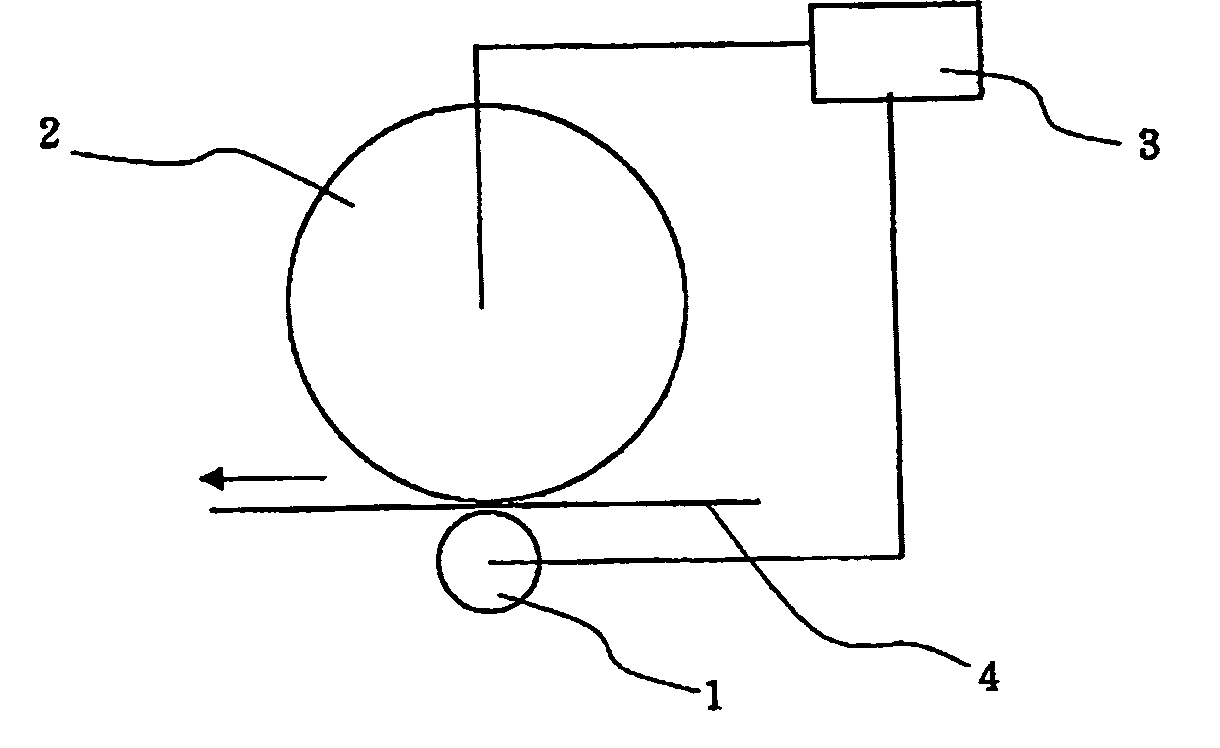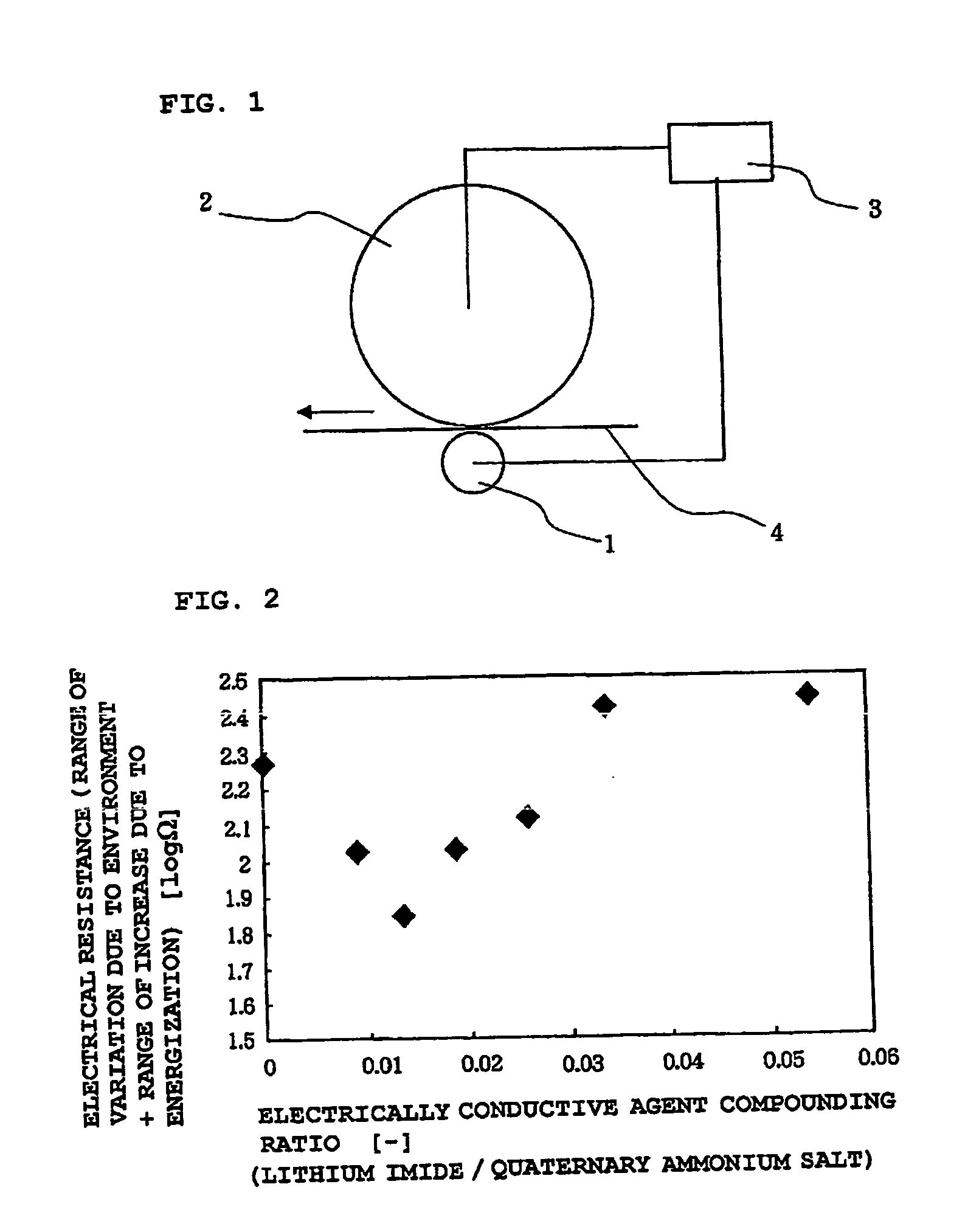Electrically conductive polymer member, transfer roller, and image forming device
a polymer member and polymer technology, applied in the direction of non-metal conductors, instruments, corona discharge, etc., can solve the problems of poor image, poor image, poor image, etc., and achieve the effect of stable electrical resistance value, reduced variations in electrical resistance, and poor imag
- Summary
- Abstract
- Description
- Claims
- Application Information
AI Technical Summary
Benefits of technology
Problems solved by technology
Method used
Image
Examples
example 1
Preparation of Roller
[0050] Sixty parts by weight of polyether polyol which was produced by adding propylene oxide and ethylene oxide to glycerin at random and which had a content of ethylene oxide unit of 16%, the number of functional group of substantially 3, a molecular weight of 5,000, and an OH value of 34; 40 parts by weight of polytetramethylene ether glycol having a molecular weight of 1,000 and an OH value of 113; 22 parts by weight of isocyanate which was a mixture of diphenylmethane diisocyanate, urethane-modified diphenylmethane diisocyanate, and carbodiimide-modified diphenylmethane diisocyanate and which had a content of isocyanate of 26.3%; 4 parts by weight of silicone foam stabilizer which was a dimethylpolysiloxane-polyoxyalkylene copolymer and which had an OH value of 32; 0.333 parts by weight of ethyl sulfate-modified aliphatic dimethylethylammonium; 0.0045 parts by weight of lithium bis(trifluoromethylsulfonyl) imide (Li(CF3SO2)2N); 0.013 parts by weight of di...
examples 2 to 4
[0055] A roller was prepared as in Example 1 except that the amounts of compounding of ethyl sulfate-modified aliphatic dimethylethylammonium and lithium bis(trifluoromethylsulfonyl)imide were changed as shown in Table 1 described below.
Test of Variations in Electrical Resistance due to Environment
[0056] The electrical resistance of each of the above-described rollers was measured under the same condition as that in Example 1. The electrical resistance value at room temperature and normal humidity and a range of variation due to the environment, the range being represented by difference between the electrical resistance at low temperature and low humidity and that at high temperature and high humidity, of each roller at this time are shown in Table 1 described below.
[0057] The image evaluation of each roller was conducted as in Example. A good image was produced by every roller.
Continuous Energization Test
[0058] As in Example 1, the electrical resistance was...
PUM
| Property | Measurement | Unit |
|---|---|---|
| Time | aaaaa | aaaaa |
| Weight | aaaaa | aaaaa |
| Electrical conductivity | aaaaa | aaaaa |
Abstract
Description
Claims
Application Information
 Login to View More
Login to View More - R&D
- Intellectual Property
- Life Sciences
- Materials
- Tech Scout
- Unparalleled Data Quality
- Higher Quality Content
- 60% Fewer Hallucinations
Browse by: Latest US Patents, China's latest patents, Technical Efficacy Thesaurus, Application Domain, Technology Topic, Popular Technical Reports.
© 2025 PatSnap. All rights reserved.Legal|Privacy policy|Modern Slavery Act Transparency Statement|Sitemap|About US| Contact US: help@patsnap.com



